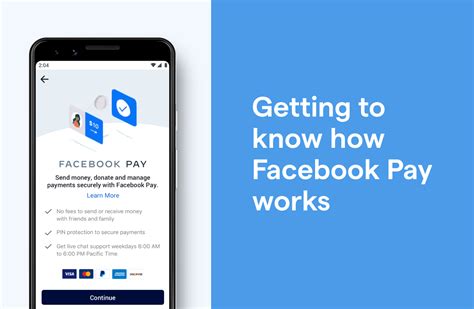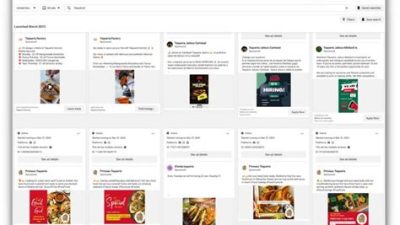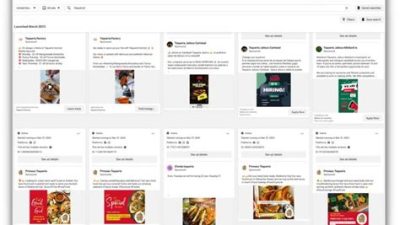
In today’s digital world, sending and receiving money has become as easy as clicking a button, and that’s where Facebook Pay comes into play. This feature allows users to make payments directly within their favorite social media platforms, like Facebook and Messenger. Whether you’re splitting bills with friends or supporting small businesses, Facebook Pay aims to make those transactions a breeze, all while keeping your financial information secure. Let’s dive into what Facebook Pay offers and how you can make the most of it!
What is Facebook Pay?
Facebook Pay is a digital payment system that allows users to send and receive money easily through various platforms owned by Facebook, including Facebook itself, Messenger, Instagram, and WhatsApp. Launched in 2019, this service aims to simplify transactions across these popular social media platforms to make it easier for friends and family to split bills, shop online, or send gifts. What makes Facebook Pay particularly appealing is how seamlessly it integrates into the daily activities of its users. Instead of having to switch apps or use different services to transfer money, users can do so directly within the app they are already using to connect with friends or follow brands. Security is also a critical aspect of Facebook Pay; the service utilizes advanced encryption technology and two-factor authentication to ensure that transactions are safe and secure. All of this makes Facebook Pay a convenient option for those who are already active on the platform, significantly reducing the friction often associated with digital payments.
How to Set Up Facebook Pay
Setting up Facebook Pay is a straightforward process, designed with user-friendliness in mind. To get started, you need to be logged into your Facebook account or the messenger app. The initial step is to navigate to the ‘Facebook Pay’ settings, which can often be found in the settings menu. Once you access it, you will be prompted to enter your payment information, which can include credit or debit card details or link to your PayPal account if you prefer that option. After entering your details, you typically need to verify your identity, which may involve a code sent to your mobile device or email. This step not only eases the process but ensures your transactions remain secure. Once set up, you can quickly send money to friends or make purchases without needing to re-enter your payment information each time. It’s truly a one-and-done setup that caters to busy lifestyles, allowing you to transact while chatting with friends or exploring new businesses on social media.
Using Facebook Pay for Transactions
Using Facebook Pay for transactions is as easy as sending a message. Whether you want to pay for a small item from a local business or split the bill for dinner with friends, the process is simple. When you are ready to send money, just click on the money icon in Messenger or other platforms where Facebook Pay is enabled. Enter the amount you wish to send, and you have the option to add a note or description if you like. After confirming the details, you simply hit send, and the money is on its way. The recipient will receive a notification and can choose to accept the payment. For businesses, Facebook Pay offers a streamlined way to accept payments directly from customers, enhancing the overall shopping experience. This ease of use extends to paying for ads and other services on Facebook, making it an all-in-one solution for both personal and business transactions.
Benefits of Using Facebook Pay
One of the standout benefits of Facebook Pay is its convenience. Given that many of us spend a considerable amount of time on Facebook, Messenger, or Instagram, having a payment option readily available eliminates the need to download and manage multiple payment apps. You can conduct transactions while scrolling through your feed or catching up with friends, making it a real time-saver. Moreover, Facebook Pay is designed with user experience in mind, minimizing the number of steps needed to complete a payment. Security features like two-factor authentication also mean that you can transact confidently, knowing that your financial information is protected. Another significant advantage is how easily you can keep track of your transactions. All your payment history is conveniently located within the app, allowing you to monitor your spending without having to sift through emails or external bank statements. This holistic approach to finance and social interaction makes Facebook Pay a unique and efficient tool for managing your digital payments.
Facebook Pay vs. Other Payment Services
When comparing Facebook Pay to other payment services like Venmo, PayPal, or Cash App, several factors come into play. One significant difference is how Facebook Pay integrates with social networking. Unlike other payment platforms, which may feel transactional and somewhat separate, Facebook Pay operates within a social context, enhancing the experience of connecting with friends. The familiarity of the user interface reduces the learning curve for new users, making it feel less like a financial app and more like an extension of social interaction. Moreover, with Facebook’s extensive user base, the likelihood of your friends also using Facebook Pay is quite high, which means it’s easier to transfer money to the people you know. However, while Facebook Pay is excellent for social transactions, some users might prefer other platforms for their robust features, like investment options or advanced payment tracking capabilities. Understanding these nuances will help you decide which service fits your needs best, whether you appreciate the seamless integration of Facebook Pay or the specialized features of its competitors.
Understanding Facebook Pay: Features and Benefits
Facebook Pay is a digital payment system that allows users to send and receive money seamlessly across Facebook’s family of apps, including Facebook, Messenger, Instagram, and WhatsApp. This service is designed with the user in mind, providing a convenient way to handle transactions without the hassle of going through multiple apps or payment processors. One of the most significant features of Facebook Pay is its integration across multiple platforms, meaning that users can easily make purchases, send money, or contribute to fundraisers no matter which app they are using. This cross-platform functionality increases user accessibility and simplifies online transactions.
Another crucial aspect of Facebook Pay is its security features. Facebook has implemented various security measures to protect users from fraud and unauthorized transactions. These include advanced encryption and the option for users to enable two-factor authentication for their accounts. Additionally, users can monitor their payment activity through the app, providing peace of mind as they can track where their money is going in real-time. For many, knowing that their financial data is handled securely adds an extra layer of confidence in using the service for personal and business transactions.
Moreover, Facebook Pay makes the process of sending and receiving money incredibly straightforward. With just a few taps on the screen, users can transfer money to friends or pay for services without entering credit card details each time. The service also supports various payment methods, including debit cards, credit cards, and PayPal, making it versatile for users with different banking preferences. The convenience of using Facebook Pay for peer-to-peer payments or to support creators, small businesses, and charitable causes makes it an attractive option in an increasingly cashless world.
| Feature | Description |
|---|---|
| Multiple Apps | Integration across Facebook, Messenger, Instagram, and WhatsApp. |
| Security | Robust encryption and two-factor authentication options. |
| Ease of Use | Simple transaction process with minimal steps to send or receive money. |
| Payment Methods | Accepts debit cards, credit cards, and PayPal for flexibility. |
The Impact of Facebook Pay on E-commerce
The rise of digital payment solutions like Facebook Pay is reshaping the e-commerce landscape. As consumers increasingly favor online shopping, businesses are compelled to adapt quickly to changes in consumer behavior. Facebook Pay allows businesses on these platforms to provide a smooth and secure payment experience for their customers, thereby enhancing user satisfaction. Businesses can easily set up Facebook Pay, allowing them to leverage the vast audience of Facebook to offer their products and services directly within the social media environment. This presents a unique opportunity for businesses to tap into external marketing while keeping customers engaged on the platform.
Furthermore, for small businesses and individual sellers, Facebook Pay offers an accessible method to accept payments without needing a traditional point-of-sale system. This feature is especially beneficial for those selling products on social media or through local community marketplaces. It democratizes the ability to engage in e-commerce, as even small entrepreneurs can sell goods and services without significant investment in payment processing or technology infrastructure. Such convenience and low barriers to entry can drive more business and encourage innovation among small-sized enterprises, facilitating a thriving online commerce ecosystem.
Moreover, the analytics and data that businesses can gain from using Facebook Pay can provide insights into consumer purchasing behaviors and preferences. Leveraging this information, businesses can tailor their marketing strategies and improve their product offerings based on actual transactional data. By understanding customer trends, businesses might effectively increase their sales and conversions, yielding better returns from their digital marketing campaigns.
Facebook Pay vs. Other Payment Platforms
When comparing Facebook Pay to other payment platforms like PayPal, Venmo, and Cash App, several factors come into play. Facebook Pay has the advantage of being integrated into social media platforms, allowing users to transact in a more social and interactive context. For instance, shopping on Instagram or sending money through Messenger is typically more seamless than switching to a separate app. This integration could enhance customer experience, making transactions feel less transactional and more like part of a social interaction.
On the other hand, platforms like PayPal and Venmo may offer a wider range of additional services, such as invoicing, business accounts, and extensive buyer protection programs. Users often choose these platforms due to the more established reputations and features tailored specifically for small businesses or freelancers. However, Facebook Pay could gain traction simply because of its ease of use and the vast user base engaged on Facebook’s platforms, allowing users to conveniently transact where they already socialize.
From the perspective of fees, Facebook Pay stands out by not charging transaction fees for transfers on personal accounts, similar to Venmo but different from PayPal, which takes a percentage of transactions. Lower fees for transactions could attract users who make frequent transfers. As Facebook continues to expand its payment offerings and partnerships, it is worth watching how the competition in the payments landscape evolves in response to its growing popularity.
Top Facebook Pay FAQs
1. What is Facebook Pay?
Facebook Pay is a payment service that allows users to send and receive money across Facebook’s apps, making transactions simpler and more secure.
2. How do I set up Facebook Pay?
You can set up Facebook Pay through the Facebook app or Messenger by going to settings, selecting “Facebook Pay,” and following the prompts to add your payment information.
3. Is Facebook Pay free to use?
Yes, sending and receiving money between users is free. However, certain transactions, like credit card payments, may incur fees.
4. Can I use Facebook Pay for business transactions?
Yes, businesses can accept payments through Facebook Pay, which allows a seamless transaction process for customers shopping online.
5. What payment methods does Facebook Pay accept?
Facebook Pay allows you to use debit cards, credit cards, and PayPal to make transactions.
6. Is Facebook Pay secure?
Yes, Facebook Pay uses advanced encryption and security measures to protect users’ financial information and transactions.
7. Can I use Facebook Pay internationally?
Facebook Pay is primarily available in regions where Facebook operates, so international usage may depend on your location and the availability in your country.
8. Can I disable Facebook Pay if I no longer want to use it?
Yes, you can disable Facebook Pay in the settings of the app at any time.
9. What happens if I experience a problem with a transaction?
If there’s an issue with a transaction, you can report it through the app for assistance and resolution from Facebook Pay support.
10. How do I send money through Facebook Pay?
To send money, open Messenger or Facebook, select the person you want to send money to, and choose the payment option to enter the amount and complete the transaction.
11. Can businesses track transactions made through Facebook Pay?
Yes, businesses can track their transactions and payments through their Facebook business account, allowing for better financial management.
12. Are there any transaction limits with Facebook Pay?
Yes, there are limits on how much money you can send or receive within a certain timeframe, which may vary based on your account status.
13. What should I do if my Facebook Pay account gets hacked?
If you suspect that your account has been compromised, immediately report it to Facebook and change your login credentials to secure your account.
14. How long does it take for transactions to process?
Most transactions are processed instantly, but they may take longer depending on your payment method and the type of transaction.
15. Can I use Facebook Pay to donate to charities?
Yes, Facebook Pay can be used to contribute to fundraisers and charitable donations directly through Facebook.
Thanks for Stopping By!
We appreciate you taking the time to dive into the world of Facebook Pay with us! We hope you found it helpful and maybe even a little enjoyable. As technology continues to evolve, we’re here to keep you in the loop with the latest updates. So, don’t be a stranger! Visit us again soon for more info and insights. Until next time, take care!











